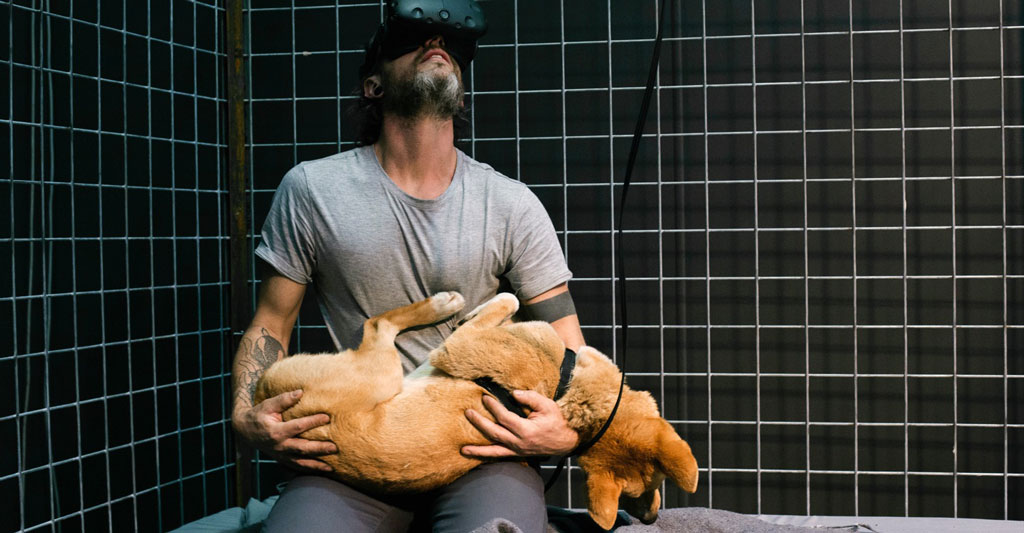ART-PRESENTATION:The Coming World,Part II
 The major exhibition project “The Coming World: Ecology as the New Politics 2030–2100” at Garage Museum of Contemporary Art in Moscow, that brings together historical and new works by over 50 Russian and international artists and occupies the entire museum building. It takes a look at a future already in the making, when the environmental agenda will become one of the main political questions (Part I).
The major exhibition project “The Coming World: Ecology as the New Politics 2030–2100” at Garage Museum of Contemporary Art in Moscow, that brings together historical and new works by over 50 Russian and international artists and occupies the entire museum building. It takes a look at a future already in the making, when the environmental agenda will become one of the main political questions (Part I).
By Dimitris Lempesis
Photo: Garage Museum Archive

The suggested timeline of references two widely speculative points in time taken from the sphere of popular science and iconic science fiction: 2030 is suggested as the year when existing resources of oil will be exhausted (Paul R. Ehrlich, Beyond the Limit, 2002), putting an end to the Oil Age; and 2100 denotes the year that, according predictions made by Arthur C. Clarke in the 1960s, human life will be able expand to other star systems. The exhibition “The Coming World: Ecology as the New Politics 2030–2100” alludes to a compressed period of time starting from the not too distant future, when the human race will be forced to live with the final knowledge that “there is no planet B,” through to future imagined in the past, in which humans were expected to progress sufficiently to be able to settle on other planets. By looking into the speculative future, the boundaries of which are determined by predictions that are no longer considered accurate, the exhibition highlights the uncertainty of our knowledge about events to come, while suggesting a “performative” understanding of the future as it is being constructed today and shaped by our activities in the present. The project open with John Akomfrah’s six-channel video installation “Purple”, using archival footage and newly shot film from across several continents, the artist has created an impressive saga about global warming and its effects on human life and the planet’s biodiversity. The exhibition features a number of historical works that marked turning points in humanity’s relationship with nature: from sixteenth-century tapestries that for the first time presented nature as a phenomenon outside of human control and the beginning of landscape as a genre in seventeenth-century Dutch painting, to the “organic culture” movement within the Russian Avant-Farde and the invention of Land Art in 1969, which made nature an artistic medium. Along with evidence of recent anthropogenic disasters like in Allan Sekula’s “Black Tide/Marea Negra” and criminal attempts to brush them under the carpet in the “Delay Decay” by Susan Schuppli, the exhibition presents works produced in collaboration with animals as agents in new relationships and new paradigms between humans, nature, and non-human species. The exhibition draws public attention to the ecological imbalances created by human activity, which many of us choose to ignore due to their incomprehensibly huge scale and unrelatability on a personal level. The exhibition has been developed in dialogue with artists and activists and rethinks exhibition practice from an ecological point of view. Around 15 works have been created specially for the exhibition, and around 10 are new versions of existing works, some of which were created in collaboration with local expert communitiess. Other projects present artistic strategies that involve direct social
Participating Artists: Kim Abeles, Doug Aitken, John Akomfrah, Allora & Calzadilla, Maurizio Cattelan, Le Corbusier, Critical Art Ensemble, Driessens & Verstappen, Karel Dujardin, Max Ernst, James Ferraro, gruppe finger, Bill Fontana, Hayden Fowler, Gints Gabrāns, Gnezdo (Nest) group, Hans Haacke, Huang Yong Ping, Mella Jaarsma, Helge Jordheim, Sergei Kishchenko, Lawrence Lek, Mikhail Matyushin, Eadweard Muybridge, Numen/For Use group, Alexander Obrazumov, Dan Perjovschi, Lia Perjovschi, Patricia Piccinini, Sascha Pohflepp, Anastasia Potemkina, Laure Prouvost, Jon Rafman, Rimini Protokoll, Pamela Rosenkranz, Martha Rosler, Boryana Rossa and Oleg Mavromatti, Salomon van Ruysdael, Tita Salina, Tomás Saraceno, Gerry Schum, Susan Schuppli, Allan Sekula, Denis Sinyakov, Victor Skersis, Studio Drift, Sun Yuan & Peng Yu, Elin Már Øyen Vister, Ben Woodard, Wooloo, Tori Wrånes
Info: Curators: Snejana Krasteva and Ekaterina Lazareva, Garage Museum of Contemporary Art, 9/32 Krymsky Val, Gorky Park, Moscow, Duration: 28/6-1/12/19, Days & Hours: Daily 11:00-22:00, https://garagemca.org










